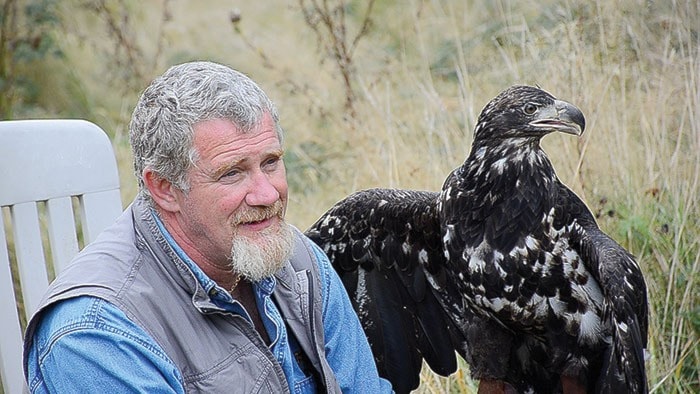The lives of eagles, owls, hawks and other birds on the northern Vancouver Island just got a little safer thanks to Mountainaire Avian Rescue Society (MARS) successfully securing some more funding.
The organization that rescues and rehabilitates wildlife – primarily large birds – just received $230,000 from the provincially-funded Island Coastal Economic Trust which will be used to build a visitor centre on its new 4.4 hectare site between Courtenay and Campbell River.
“If you can imagine MARS being over the moon – that’s us,” said MARS vice-president Pearl McKenzie.
After more than 20 years of rehabilitating sick and injured wildlife from across northern Vancouver Island, MARS is about to embark on a major expansion by adding educational tourism to the services it provides.
“It allows to build this visitors centre. It allows us to build a home for our education program – a first time home,” McKenzie said. “Our existing site just didn’t provide enough room. This big – over 11 acre – site gives us lots of room to welcome people and that’s important.
“Rehabilitation is our core program but almost all of the animals that we treat that have been injured, or have been abandoned, need our help because of negative interaction with people so education is a really important function of our work.”
MARS has experienced significant growth in its caseload, and purchased a 4.4 hectare site in 2014 between Courtenay and Campbell River. With new zoning from the Comox Valley Regional District in hand, MARS is beginning the process of building a Wildlife Eco Centre along with a new hospital facility.
Created by the Province of BC in 2006, the Island Coastal Economic Trust provides funding for economic diversification, planning and regional revitalization.
ICET got behind the MARS project in part because of its value as a tourist draw.
“The business case for the creation of the ECO Centre is clear: a very conservative estimate is 10,000 visitors annually, leading to the creation of between six and ten local jobs,” said ICET Chair Phil Kent. “Beyond the tremendous impact MARS has on the wildlife they save, this project is going to be a significant driver of tourism-based economic activity.”
The ECO Centre will include an interpretive building with displays, a theatre, closed-circuit cameras showing ‘patients’ in the wildlife hospital, meeting rooms, a gift shop, and more.
“Wildlife viewing is a significant and growing tourism activity, with people interested in authentic, educational experiences,” said Warren Warttig, President of MARS and professional biologist. “From our educational or ambassador birds, unable to leave due to injuries, to the Flight Pen where large birds including eagles, swans cranes, and other large birds are rehabilitated, to trails and viewing ponds, visitors will have an immersive experience with the wildlife at our centre.”
Studies show that more than 30 per cent of Canadians included wildlife viewing as part of their vacation experiences, and that they tended to have higher-than-average incomes and education levels, meaning that they are prime targets for destination marketing initiatives.
“ICETs own research into the visitors who will come to the ECO Centre shows that the average per-day spending is about $155,” Kent said.
MARS is already an established presence on the island, with 20,000 fans on Facebook, and numerous media stories that have gone viral, reaching international audiences.
“We’re ready to really reach our potential with this project, building the facilities that will allow us to bring visitors in for a first-hand insight to what we do,” McKenzie said. “From the moment they arrive on site when they’re greeted by a volunteer for an orientation, to the conclusion of their self-guided visit, we’re going to be providing visitors with an experience unlike any other.”
Fully staffed with both employees and volunteers, the ECO Centre will encourage guests to ask questions and have conversations to deepen their understanding of the wildlife and the rehabilitation efforts they go through.
Each habitat within the facility will lead the visitors through displays highlighting the flora and fauna of the regions of BC from which the birds arrive: the North Island, the Discovery Islands, and the inlets and fjords of the Coastal Mainland.
“This accessible ‘trail’ meanders and winds through the simulated environments, complete with the sounds one would hear in nature, giving visitors a sense of the wildlife’s environment,” said Pearl McKenzie.
Interpretive signs and story boards will describe the historical importance of each habitat to First Nations as well as the values inherent for people today.
For sections of the facility not accessible to the public - like the wildlife hospital - closed-circuit cameras will be placed throughout the buildings to allow visitors to see the patients and the work being done in the rehab centre. Volunteers and staff will relay the story of each patient, including where and how it was rescued, the cause of injury or illness, prognosis, and other information.
The project is expected to be complete by August, 2017.
